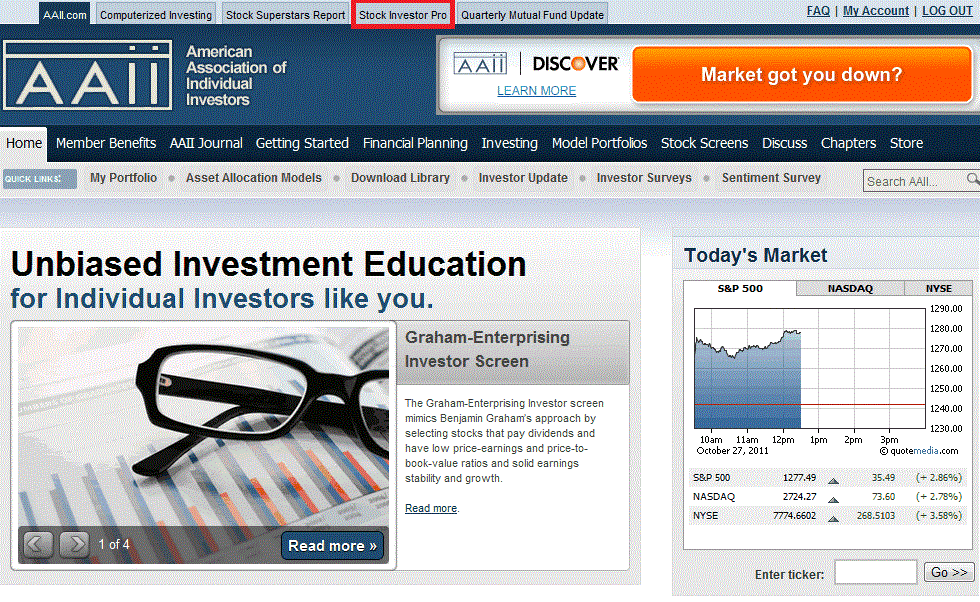AAII Investor Classroom
Post on: 7 Июнь, 2015 No Comment

Investing Basics
Need help getting your foot in the door of the investing world? A few simple concepts lay the groundwork for establishing a portfolio that fits your needs and goals.
First Steps to Successful Investing
Learning to make an educated guess as to the returns you can expect, given your tolerance for risk.
Developing a personal investment profile sets you on the proper path for making investment choices that are right for you.
How you allocate your portfolio among these three categories will have by far the greatest impact on your performance of any investment decision you make.
Properly allocating your assets within the major categories can reduce your portfolio risk without lowering your overall return.
How to get your investment program off the ground if you are starting from scratch with little savings.
Easing into the market by making automatic investments on a set schedule.
Mutual Fund Investing
If you’re contemplating investment in mutual funds, you’ll want to arm yourself with some basic information. A tour through this classroom gives you all the tools you need to get started.
Mutual Fund Investing
How funds are structured and what a fund load is.
Assessing your risk tolerance, and measuring volatility in a mutual fund.
Choosing the Best Fund for You
How to glean information from a fund’s prospectus or profile.
Corralling the wealth of free data offered on-line for quick and easy fund comparisons.
Stock Investing
Trying to determine the worth of a company is like going on a mining expedition, but it doesn’t have to be laborious. A basic understanding of the important numbers will ease your way.
Digging for Gold: What the Financial Statements Reveal About a Firm
How a balance sheet balances to report on the current financial position of a firm.
The income statement reports on one of the most critical company figures-its earnings per share.
The importance of knowing how company raises money and what they use it for.
Ratio analysis relies on financial statements to study the past and develop a feel for a company’s attractiveness.
How to Choose a Stock
An introduction to the Valuation Worksheet and how to approach it.
Where to find the numbers you need to complete the Valuation Worksheet and begin your analysis.
Using the Valuation Worksheet to analyze a prospect that is a stable, dividend-paying company.
Using the Valuation Worksheet to analyze a young, growing company based on its earnings.
Bond Investing
Think of the bond market as a mystery wrapped in an enigma? You are not alone. But this classroom pulls back the curtain so that you can analyze individual bonds with confidence.
Investing in Bonds
An overview of how the bond market works: who sets bond prices, where to find a bond broker, and what a callable bond is.
The factors that affect the price of a bond and how to protect yourself against bond fluctuations.
Clearing up misconceptions about what a bond?s credit rating really means, and how it impacts your portfolio.
The difference between yield and total return for a bond, and how they are calculated.














